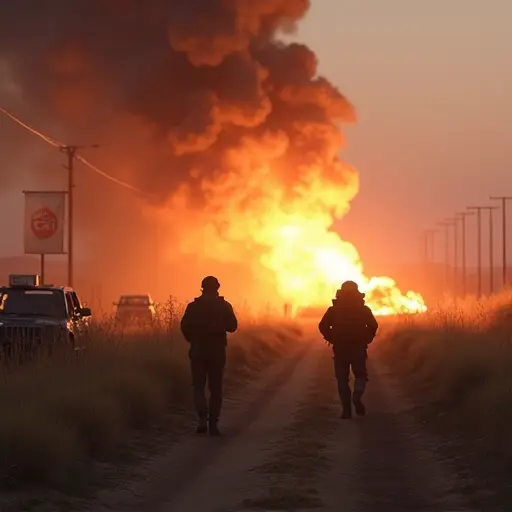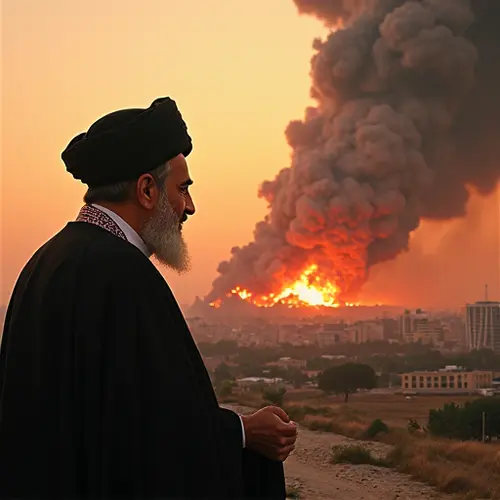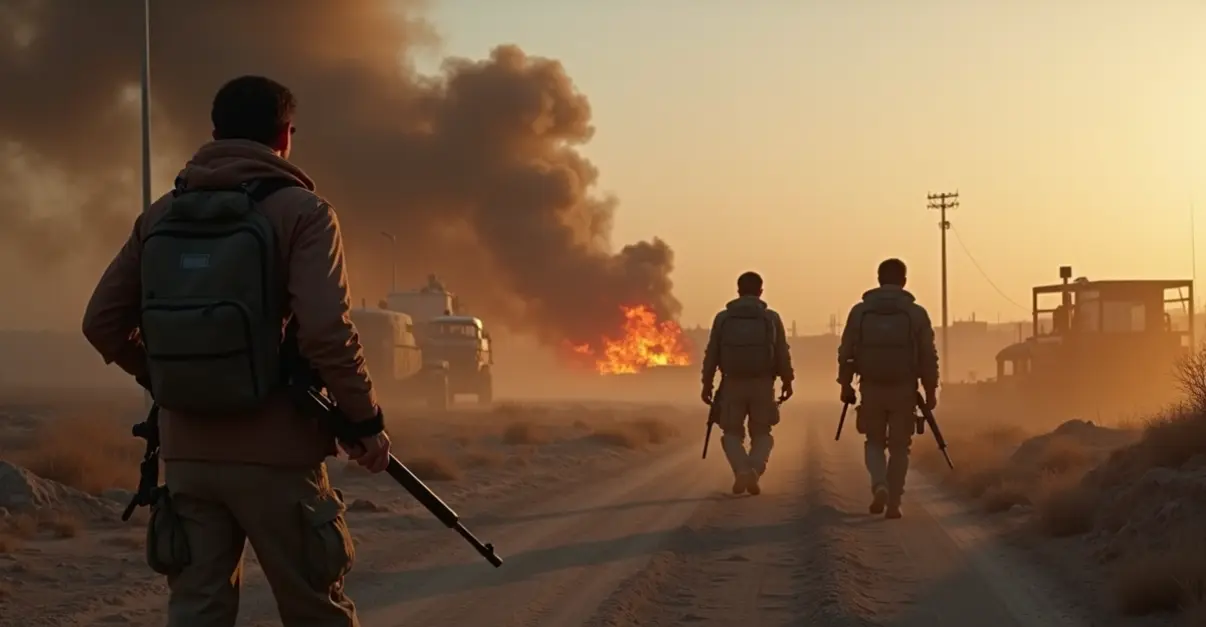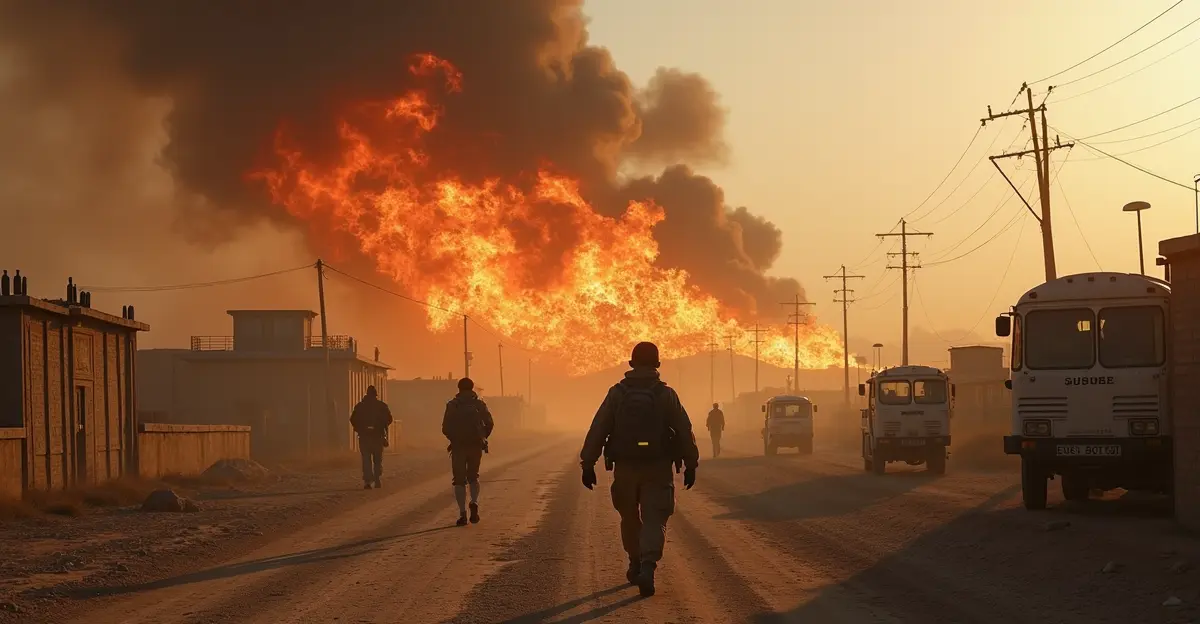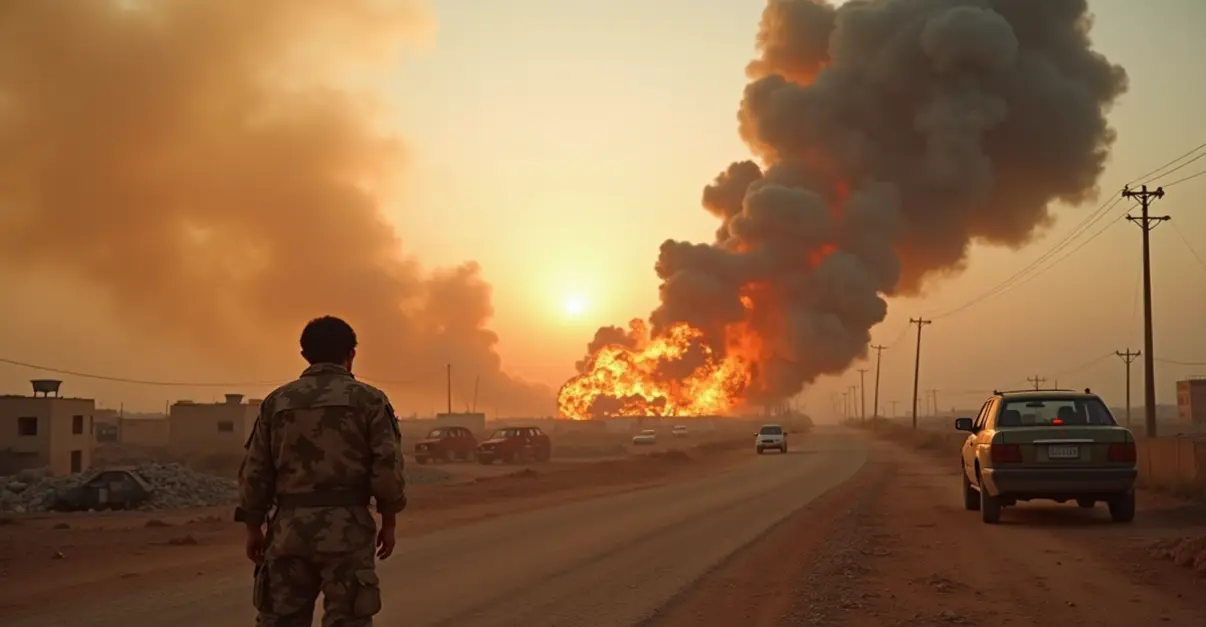Israel and Iran engaged in direct military conflict from June 13-24, 2025, with cross-border strikes targeting nuclear facilities and civilian areas. The conflict escalated with US intervention before a ceasefire was brokered through Gulf state diplomacy.
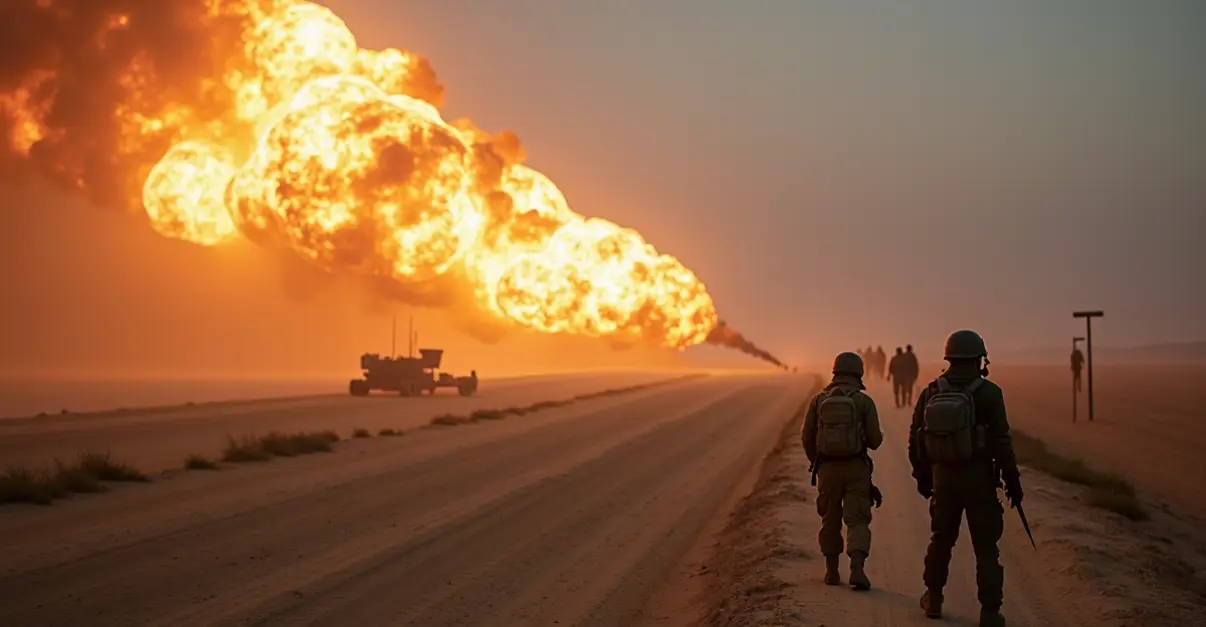
Twelve-Day War Shakes Middle East Stability
The Middle East witnessed one of its most dangerous military confrontations in decades as Israel and Iran engaged in direct conflict from June 13-24, 2025, marking a dramatic escalation in their long-running proxy war. The conflict began when Israel launched Operation Rising Lion, a sophisticated surprise attack targeting Iranian nuclear facilities at Arak and Natanz, along with military installations and key leadership figures.
Rapid Escalation and Retaliatory Strikes
Iran responded with overwhelming force, launching over 550 ballistic missiles and more than 1,000 suicide drones at Israeli targets. The retaliatory strikes hit civilian population centers, including a hospital in Israel's Negev region that injured at least 30 people. 'We are witnessing the crossing of red lines that were previously considered inviolable,' noted a senior UN official who spoke on condition of anonymity.
The conflict escalated further when the United States intervened on June 22, conducting coordinated strikes on three major Iranian nuclear facilities at Natanz, Fordo, and Isfahan. This prompted additional Iranian retaliation, including missile attacks on US bases in Qatar. The UN Human Rights Office reported significant civilian casualties, with estimates of 1,060-1,190 deaths in Iran and at least 24 in Israel.
Diplomatic Efforts and Ceasefire Agreement
Intense diplomatic efforts by Gulf Arab states, including Saudi Arabia, UAE, Qatar, and Oman, helped broker a ceasefire agreement announced by US President Donald Trump on June 21. 'The region cannot afford another day of this conflict,' stated Qatari Foreign Minister Mohammed bin Abdulrahman Al Thani during negotiations. The diplomatic breakthrough came after days of shuttle diplomacy and urgent appeals from regional leaders warning of catastrophic implications if the conflict widened.
According to analysis from the United States Institute of Peace, the ceasefire represents a critical moment in the decades-long rivalry. Before the conflict, both countries had been separately pursuing de-escalation with regional nations - Israel through the Abraham Accords normalization agreements and Iran through improved relations with Gulf Cooperation Countries.
Nuclear Program at Center of Conflict
The confrontation centered heavily on Iran's nuclear program, which Israel considers an existential threat. The conflict began just one day after the International Atomic Energy Agency (IAEA) declared Iran non-compliant with its nuclear obligations in a resolution put forward by the United States, United Kingdom, France, and Germany. 'This was about preventing nuclear proliferation at all costs,' explained an Israeli defense official.
Despite extensive damage to Iran's nuclear facilities, analysts from the IAEA and independent observers believe Iran evacuated its enriched uranium before the strikes, delaying its nuclear program by only a few months. However, other analysts and Western officials argued the delay was significantly longer.
Regional and Global Implications
The conflict had immediate global economic consequences, with oil prices threatening to spike above $150 per barrel and significant shipping disruptions in the Strait of Hormuz. Analysis from the Lansing Institute warned of three potential scenarios: controlled escalation (most likely), regional war (high-risk), and strategic de-escalation.
Russian President Vladimir Putin warned that US intervention would trigger a 'terrible spiral of escalation,' while China's Xi Jinping called for an immediate ceasefire. Both Russia and China condemned Israel's actions as violating international law, reflecting the broader geopolitical divisions the conflict exposed.
Path Forward and De-escalation Challenges
While the ceasefire holds, significant challenges remain for sustainable de-escalation. Both nations face internal pressures - Iran with economic collapse and regime militarization, Israel with military overstretch and political polarization. The conflict has shattered deterrence expectations and crossed previously established red lines, making future diplomatic engagement more complex.
'The cease-fire could help the region return to rapprochement and de-escalation, but both sides need to demonstrate genuine commitment to dialogue,' noted Middle East analyst Dr. Sarah Cohen from the Center for Strategic Studies. The coming weeks will test whether the temporary ceasefire can evolve into more permanent diplomatic solutions or whether the region faces renewed escalation cycles.

 Nederlands
Nederlands
 English
English
 Deutsch
Deutsch
 Français
Français
 Español
Español
 Português
Português




